The term Synthetism, from the French verb synthétiser, refers to the Post-impressionist painting style of Paul Gauguin, Emile Bernard, Louis Anquetin, and the painters who gathered at Pont Aven in the late 1880s and early 1890s. This painting method was based on the synthesis of the subject matter and the artist’s experience of the subject. Synthetist artists insisted on the two-dimensionality and flatness of the painting, which was built by harmonious relations of colored fields and accentuated dark contours. Prominent representatives of this movement are Paul Gauguin, Emile Bernard, Louis Anquetin, Charles Laval, Emile Schuffenecker, Paul Sérusier.
Notable Synthetism Artwork
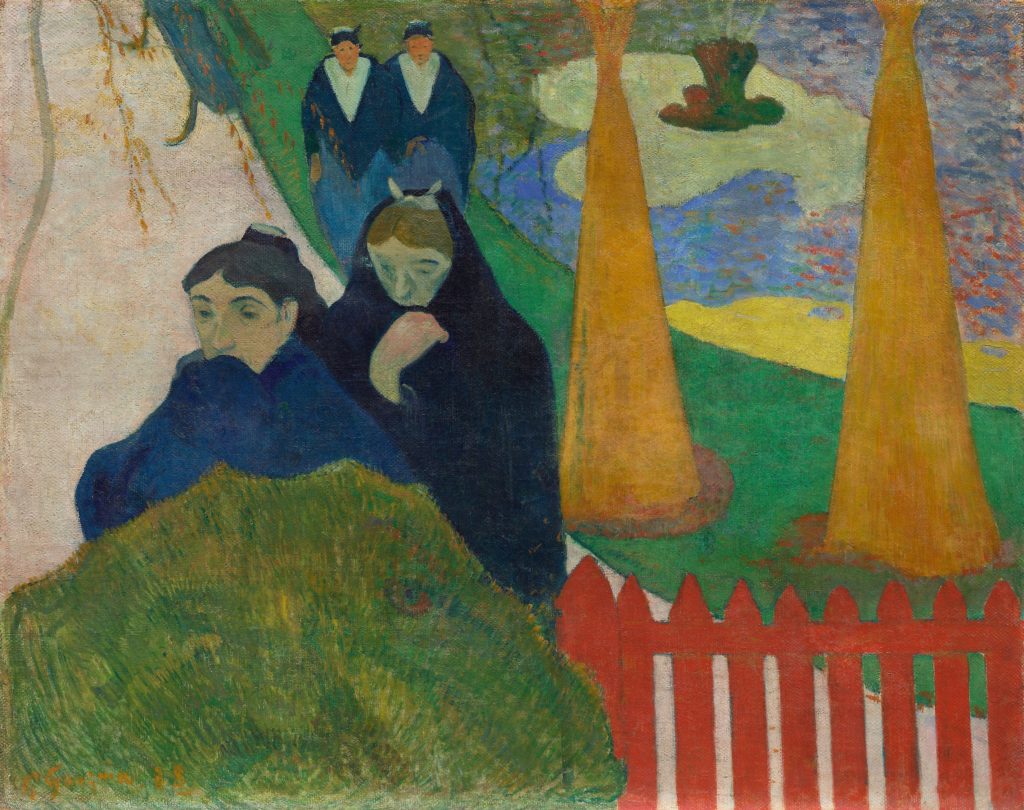
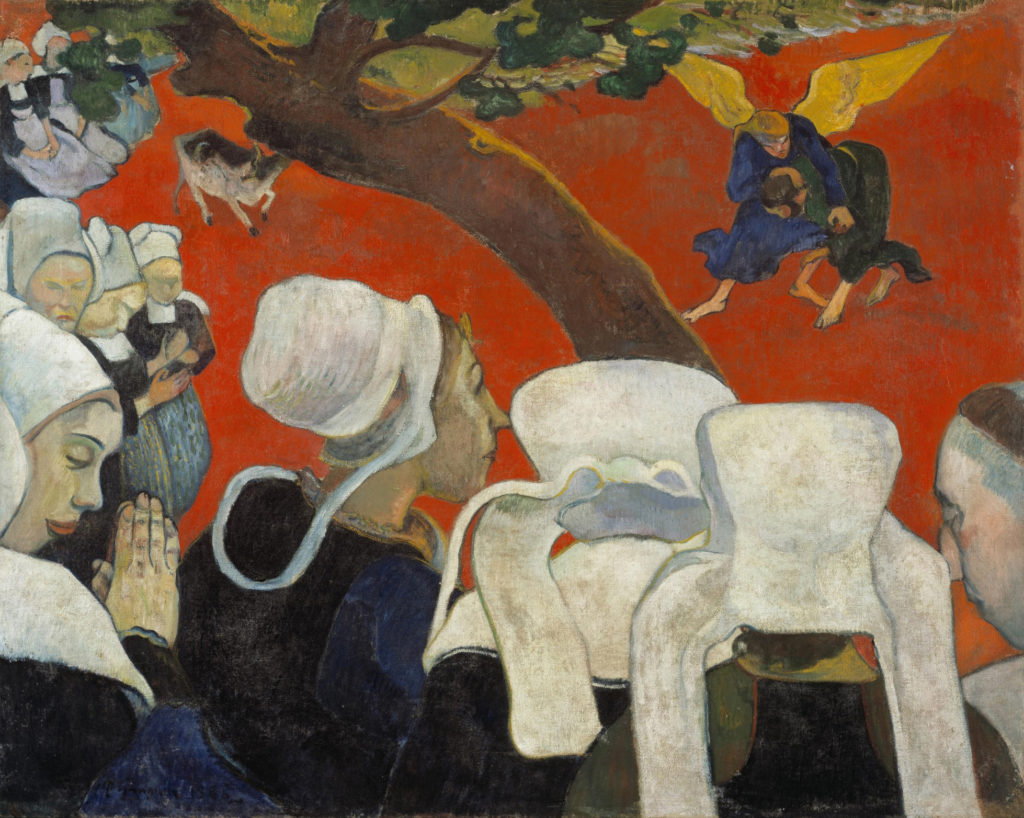
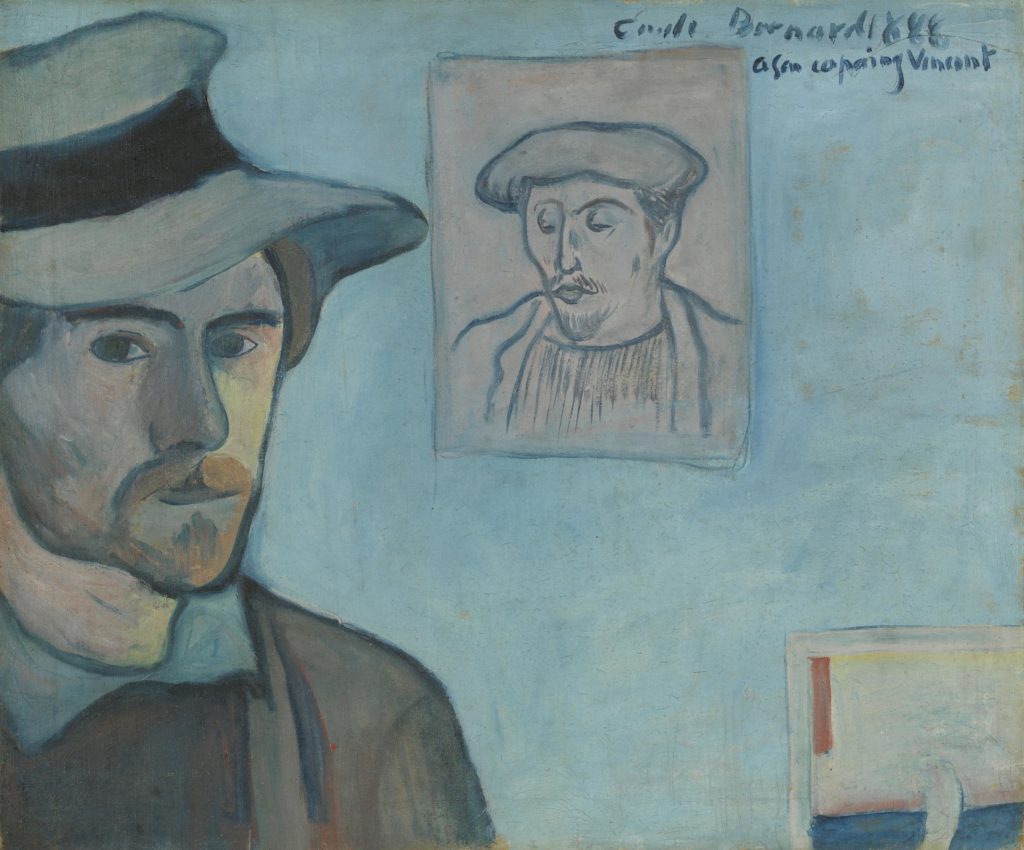
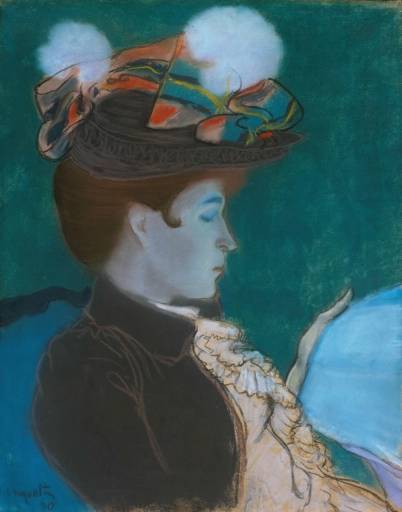
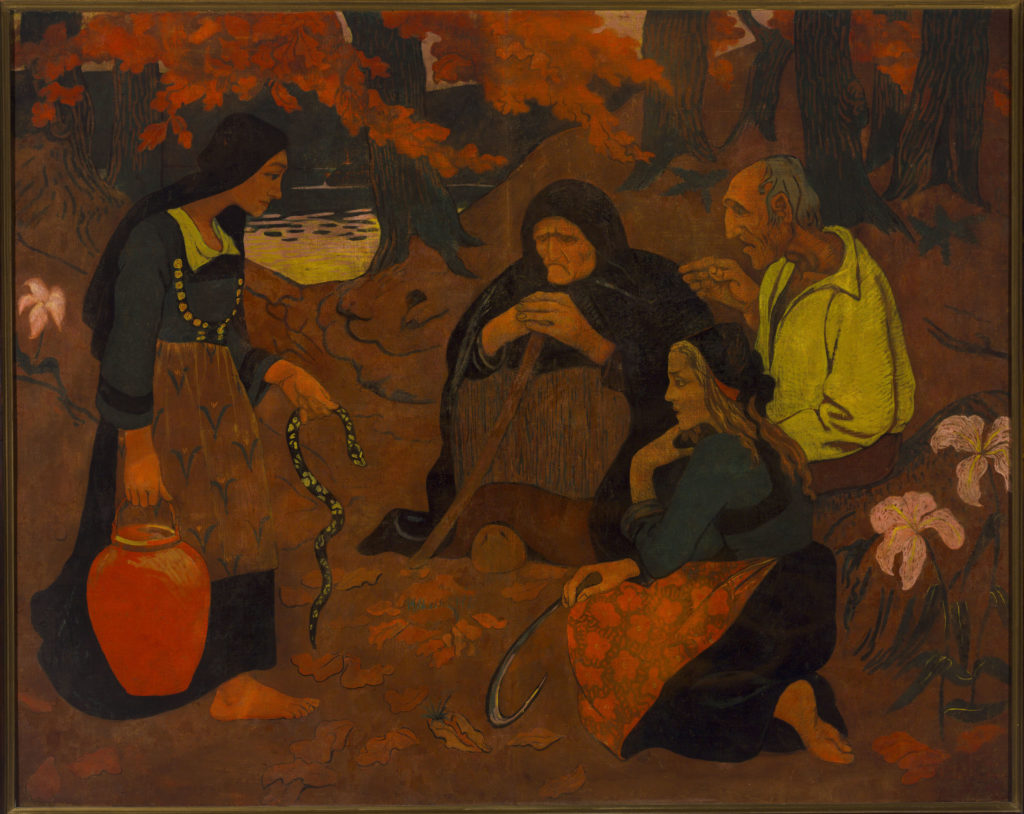
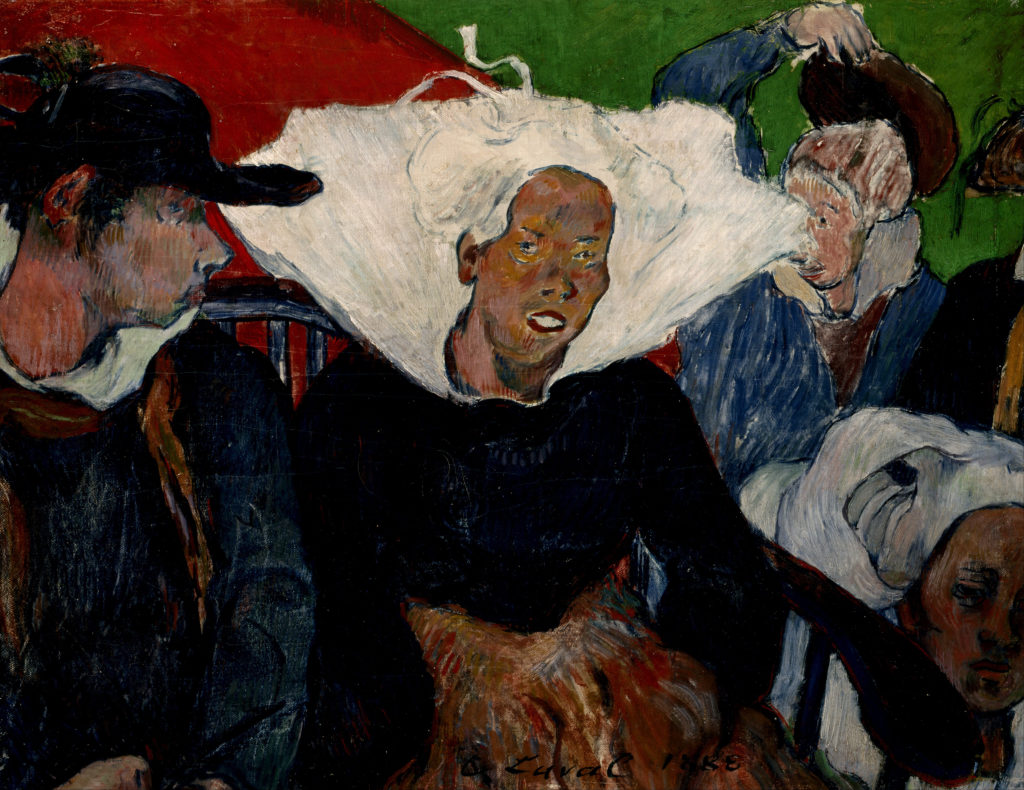
Synthetism as a response to Impressionism and Neo-Impressionism
Although the painting of the early phase of Gauguin’s work belongs to Impressionism from the mid-1880s and his stay at Pont Aven, his abandonment of the Impressionist style is noticeable. The dominant frameworks of Impressionist ideas about the faithful representation of the moment and the role of light change in defining the scene became insufficient for what Synthetist artists aimed to achieve. Gauguin believed that by focusing on the light qualities of the scene, other important elements were potentially lost. These elements refer to the overall emotional experience that the painter goes through when he encounters a certain scene or symbol. Synthesis was made by combining the material qualities of a certain scene with the artist’s feelings. Opposite the synthesis of the physical qualities of the scene, its emotional capacity for the painter, and the autonomous values of line and color stands the particularity of Impressionism and Neo-impressionism orientation to light qualities or optical principles of color recognition.
Pont Aven school
The Pont Aven art colony has been a meeting place for many painters since the 1850s. Gauguin’s stays here during the late 1880s were of key importance for the development of Synthetism. In researching a different range of topics, new relationships of motives, as well as the incorporation of religious symbols into everyday actions that attracted Gauguin’s attention, Brittany served as a very fruitful ground. Although this French region became an increasingly famous tourist destination in the second half of the 19th century, to which the development of the railway significantly contributed, the rural characteristics of the area to which artists returned over the years have not completely disappeared. Brittany’s nature, as well as folk art and tradition, have offered a wide range of motives for the development of Synthetist language.
The exchange of ideas about painting after Impressionist art between Paul Gauguin, Emile Bernard and Louis Anquetin at Pont Aven marked the beginning of Synthetism or Cloisonnism.
Cloisonnism
At the time of Gauguin’s arrival at Pont Aven, Emile Bernard and Louis Anquetin were developing the principles of Cloisonnism. The very term Cloisonnism was introduced by the critic Édouard Dujardin in 1888. Bernard and Anquetin were inspired by the medieval cloisonné technique, which included clearly defined contours separating colored fields. The artists sought to transfer these principles into their artistic work with the aim of realizing the primordial nature of the painting as a two-dimensional painted surface. In the affirmation of these principles, they are joined by Gauguin, who also draws inspiration from medieval woodcuts and then very popular Japanese woodblock prints. The painted composition in the manner of Cloisonnism or Synthetism implied harmony of simplified forms that rested on a network of strong lines separating the large areas of primary color. Gauguin further insisted on the synthesis that arises in the process of creating an image that combines the objective qualities of the natural forms and the artist’s personal experience. Gauguin especially emphasized the part in the creative process that referred to the artist’s memory or emotions that he had towards a certain scene or motive. This is in complete contradiction with the Impressionist ideas of recording a spontaneously found scene or the Pointillist scientifically distant method.
Paul Gauguin’s Vision After the Sermon
Probably the most famous synthetist artwork is Paul Gauguin’s Vision After the Sermon. This painting was created in 1888 in Pont Aven and combines all the principles of Synthetism. Following in the footsteps of the aesthetics of Japanese prints, Gauguin approached natural forms in this work through the creation of a non-naturalistic landscape reinforced by religious symbolism. Using formal means characteristic of Synthetist style, such as emphasized two dimensional flat patterns, contouring and omission of shaded areas, and tinting of colors, Gauguin created an atmosphere of mystical tension. He succeeded in this by dividing the composition diagonally into two planes. These two realities in the painting are separated by the different colored fields and the lines of the tree that follow the diagonal of the canvas. The group of the Breton women in the foreground that exudes serenity and brings silence of prayer is confronted with a dramatic scene of wrestling in the background. This Old Testament motif of Jacob’s wrestling with the angel Gauguin decided to form coloristically as two realities – the physical reality of the foreground of the painting and the reality of the vision of the background of the painting. The dramatic shade of red that Gauguin used as a contrast to the real color of the grass further suggests the super-real qualities of this scene.
Les Nabis
Les Nabis is the name of an art group whose members were active in Paris between 1888 and 1900. Artists who belonged to this movement were Pierre Bonnard, Maurice Denis, Paul Serusier, Paul Ranson, Auguste Cazalis, Édouard Vuillard, Ker-Xavier Roussel, and Félix Vallotton.
The crucial moment for the formation of this group was Paul Serusier’s meeting with Paul Gauguin in 1888. The two artists met in Pont Aven where Serusier got acquainted with the ideas of Synthetism on the spot. Guided by Gauguin’s suggestions Serusier painted The Bois d’Amour at Pont Aven or The Talisman. This painting soon gained cult status as the first painting by the Les Nabis group. Another member of Les Nabis, Maurice Denis in The Definition of Neo-traditionalism in 1890 writes Remember that a picture, before being a battle horse, a female nude or some sort of anecdote, is essentially a flat surface covered with colors assembled in a certain order.
The Volpini Exhibition
The exhibition by the Impressionist and Synthetist Group or Volpini Exhibition was held at the Café des Arts or Café Volpini, on the Champ de Mars in Paris in 1889. Emile Schuffenecker organized this and invited Paul Gauguin, Charles Laval, Léon Fauché, Louis Anquetin , Georges Daniel and Émile Bernard also participated in the exhibition. Vincent Van Gogh refused to participate on the other hand Neo-Impressionists, Georges Seurat, Paul Signac, Henry-Edmond Cross and Pissarro were not invited to exhibit. This exhibition was a kind of response to the exhibition at the Académie des Beaux-Arts, which completely ignored art movements like Synthetism and Impressionism as artistically relevant phenomena. The large exhibition supported by the Academy took place as part of the Exposition Universelle, which attracted a large number of visitors, unlike the exhibition by the Impressionist and Synthetist Group, which was not particularly visited or represented in the press.
Notable Artists
- Paul Gauguin (1848 – 1903)
- Emile Bernard (1868 – 1941)
- Louis Anquetin (1861 – 1932)
- Charles Laval (1862 – 1894)
- Emile Schuffenecker (1851 – 1934)
- Paul Sérusier (1864 – 1927)
